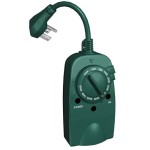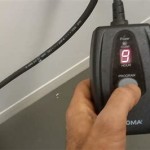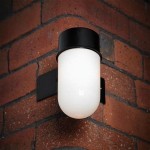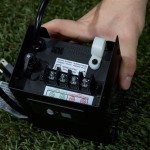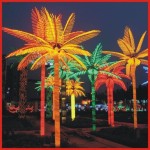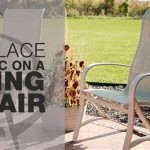How to Light Up Your Outdoor Basketball Court
Proper lighting is essential for enjoyable and safe nighttime basketball games. A well-lit court allows players to clearly see the ball, the lines, and each other, reducing the risk of injuries and enhancing the overall playing experience. This article provides a comprehensive guide on how to effectively illuminate an outdoor basketball court.
1. Assessing Your Lighting Needs
Before purchasing any lighting equipment, it is crucial to assess the specific lighting needs of the court. Several factors influence these needs, including the size of the court, the height of the surrounding obstacles (like trees or buildings), and the desired level of illumination. For recreational play, a lower light level may suffice, while competitive play often requires higher light levels for optimal visibility. Measuring the court dimensions and noting the surrounding environment will help determine the appropriate number and placement of lights.
Another factor to consider is light trespass. Excessive light spilling onto neighboring properties can be a nuisance. Choosing fixtures with good light control and directing the light downwards onto the court can minimize this issue. Regulations regarding light pollution may also exist in your area; checking local ordinances is recommended before installing any lighting system.
2. Choosing the Right Lighting Fixtures
Selecting appropriate lighting fixtures is crucial for achieving optimal court illumination. Several types of lighting fixtures are commonly used for outdoor basketball courts, including LED, metal halide, and high-pressure sodium lights. LED lights are becoming increasingly popular due to their energy efficiency, long lifespan, and excellent light quality. They also offer instant on/off capabilities and better control over light direction, reducing light trespass.
Metal halide lights offer good light quality and color rendering, making them a suitable option. However, they consume more energy compared to LEDs and have a shorter lifespan. High-pressure sodium lights are another option, offering high efficiency and long life, but their light quality is generally considered inferior to LEDs and metal halides, often producing a yellowish light.
When choosing fixtures, consider the light distribution pattern. A narrow beam angle is suitable for focusing light on specific areas, while a wider beam angle is better for illuminating a larger area. The fixture's lumen output, measured in lumens, indicates the total amount of light emitted. A higher lumen output generally translates to a brighter court.
The International Dark-Sky Association (IDA) recommends choosing fixtures with a color temperature of 3000K or lower for outdoor lighting to minimize light pollution and its impact on the night sky and wildlife. This warmer color temperature is also more visually comfortable for players and neighbors.
3. Determining Pole Placement and Height
Strategic pole placement and height are crucial for uniform court illumination and minimizing glare. Positioning light poles too close to the court can create shadows and uneven lighting, while placing them too far away may require more powerful (and more expensive) fixtures to achieve the desired light level. Generally, four poles positioned at the corners of the court, or slightly outside the corners, provide good coverage for a standard-sized court.
The height of the poles significantly impacts light distribution. Taller poles provide better coverage but may require more powerful fixtures. Shorter poles can be more cost-effective but may create more shadows. Consult with a lighting professional to determine the optimal pole height based on the chosen fixtures and the court's dimensions. They can help calculate the necessary light levels and ensure uniform distribution across the playing surface.
It is essential to consider any potential obstructions, such as trees or buildings, that might block light and create uneven illumination. Adjusting the pole placement and height accordingly can mitigate these issues. Furthermore, ensuring the poles are securely anchored to withstand wind and weather conditions is critical for safety and longevity.
4. Electrical Requirements and Installation
Installing a basketball court lighting system requires careful consideration of electrical requirements. Consulting with a qualified electrician is highly recommended to ensure safe and compliant installation. The electrician will determine the necessary wiring, circuit breakers, and other electrical components based on the chosen lighting fixtures and their power consumption.
The electrician will also ensure the wiring is properly grounded and protected from weather elements. They will install the necessary conduit and wiring from the main power source to the light poles, ensuring compliance with all local electrical codes. Proper grounding is essential for safety and prevents electrical shocks.
Once the electrical infrastructure is in place, the lighting fixtures can be mounted on the poles and connected to the wiring. Aiming the fixtures correctly is crucial for achieving the desired lighting pattern. After installation, a final check should be performed to ensure all lights are functioning correctly and that the illumination is uniform across the court. Regular maintenance, including cleaning the fixtures and checking the wiring, will ensure the longevity and performance of the lighting system.

Guide To Basketball Court Lighting Design Mklights

Guide To Basketball Court Lighting Design Mklights

Newest Basketball Court Lights Standard Guide Jan 2024 Topsportsled Com

Guide To Basketball Court Lighting Design Mklights

Basketball Court Lighting

Basketball Court Lighting
Court Vision Solar Powered Light First Team Inc

Beautiful Outdoor Basketball Court And Lighting Backyard Home

Pin On House Ideas

Basketball Court Lighting
Related Posts


